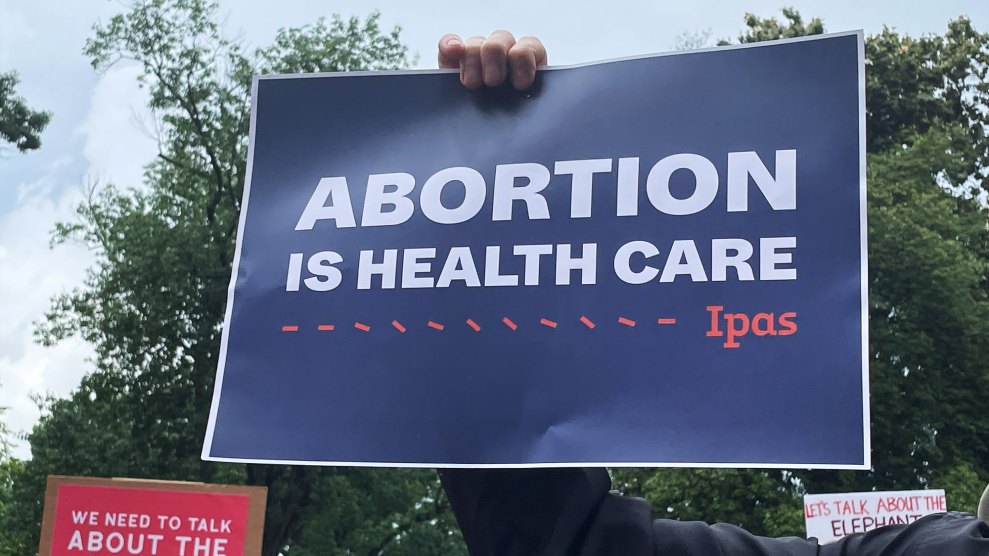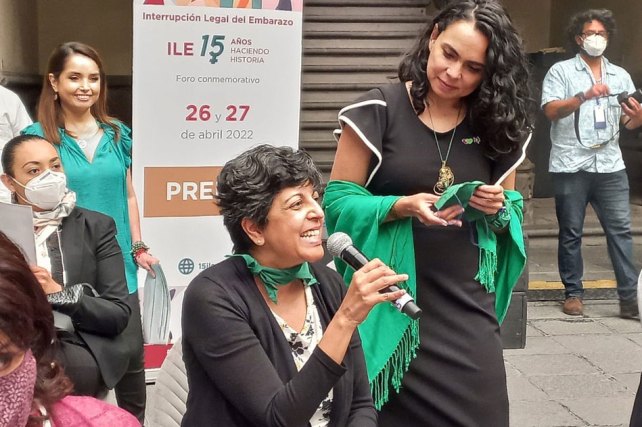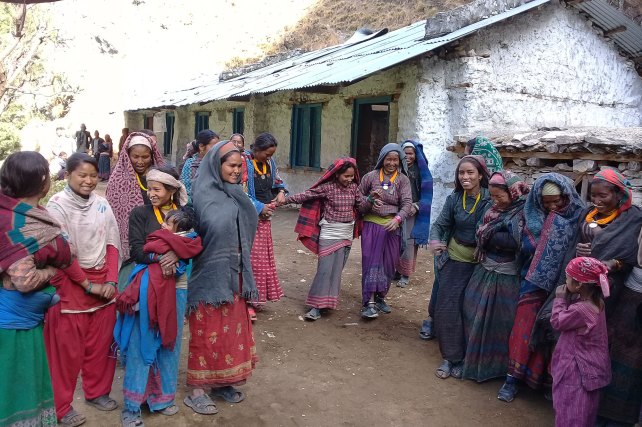
"Abortion is health care" sign held during a protest of the Supreme Court decision to overturn Roe v. Wade.Ipas
This content was written by Anu Kumar, and paid for by Ipas; it was not written by and does not necessarily reflect the views of Mother Jones' editorial staff. See our advertising guidelines to learn more.
It has been just over a year since the Supreme Court repealed the constitutional protection for abortion enshrined by Roe v. Wade. We saw it coming—many of us shouted from the rooftops while conservatives slowly but surely chipped away at abortion access for decades. They were in it for the long haul and got their reward. Since the repeal of Roe, 14 states now ban most abortions, two states severely limit abortion, and we will surely see more bans and limitations enacted in the coming months.
This attack on health, wellbeing, and bodily autonomy could get me down. I’ve been working for reproductive justice for the last 20 years—primarily at Ipas. As a student long ago, I was shocked at learning how many people die from pregnancy-related causes, and how easily these tragedies could be prevented. When people who don’t want to be pregnant are denied access to abortion, they suffer negative health consequences, more economic hardship, more violence, and poorer outcomes for the children they already have, no matter where in the world they live.
But it doesn’t have to be this way. At Ipas, our globally connected, locally led network of staff and partners has been working to expand access to abortion and contraception for 50 years. We’ve seen the positive results when every person’s reproductive freedom is supported.
In Mexico City, for example, abortion was a crime until 2007, when the law was changed to legalize abortion during the first 12 weeks of pregnancy, with services available throughout public and private health facilities. During the first 15 years of safe, legal abortion in Mexico City, more than 250,000 people were provided with abortion care, there were zero abortion-related deaths, and high-quality services were available for free in public clinics, including the option of abortion with pills.

Ipas President and CEO Anu Kumar and Ipas Latin America and Caribbean Director María Antonieta Alcalde commemorate the 15-year anniversary of abortion legalization in Mexico City in 2022.
Ipas
Another example is Nepal, where abortion was legalized in 2002. Since then, the government has made abortion free of charge in the public health system and available in every district in the country. Health officials are even working to provide access in extremely remote areas through community health volunteers and abortion with pills.
That’s what reproductive freedom looks like.
As these examples show, law change is important, but it’s just one component in a recipe for sustainable abortion access. In a sustainable abortion ecosystem, people have the information they need to make decisions about their own bodies, there is community and political support for human rights and abortion access, there is a trained health workforce, and there are laws that support reproductive health and bodily autonomy.

In the remote Mugu District in Nepal, community members stand in front of an old school building they helped Ipas Nepal transform into a health center.
Ipas Nepal
That’s what reproductive freedom truly looks like. And that’s why Ipas is bringing our experience to the United States. We’re training health providers in abortion care, working across borders to support grassroots groups and networks, fostering transnational activism, and holding politicians accountable.
Since 1994, more than 50 countries around the world have liberalized their abortion laws. By turning back the clock on abortion rights, the United States is now a global outlier. But it doesn’t have to be that way. Anti-abortion activists scored a political victory by upending Roe v. Wade, for sure. But they have not won the hearts and minds of Americans. Public opinion research commissioned by Ipas in 2022 showed that nine in 10 Americans oppose total abortion bans—a finding borne out in that year’s midterm elections, when voters in five states, some of them deeply red, voted to protect abortion rights. This gives me hope that we will not be here, in this current abortion landscape, forever.
But we won’t get out of this unless we start doing things differently. Litigation or simple regulatory change isn’t enough. We need to build broad-based social support. That takes time and effort, but it can be done. Just look at Argentina, where years of hard work and public protests—known as the “green wave” movement—achieved a historic win in 2020 when abortion was legalized through 14 weeks of pregnancy. This victory has reverberated throughout Latin America and energized the public.
The fight to protect abortion access is local, national, and global. Why? Because abortion affects every body. When abortion is affordable, available, and supported by communities, people can live healthy, secure lives. They can pursue education, work, and avoid unhealthy relationships. That’s the world we are fighting for.
Anu Kumar is the president and CEO of Ipas, an international reproductive justice organization.